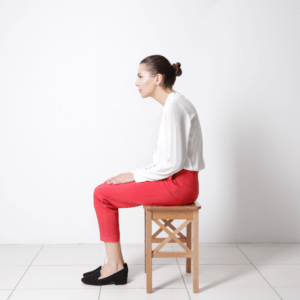Ever since lockdown began, we’ve been hearing from more and more of you about upper back and neck pain – probably because more of us are working from home! 🛋
For this reason, we want to talk to you about Upper Crossed Postural Syndrome (UCPS). 💁
UCPS is a common muscular imbalance which involves muscles in the neck and upper back. When there’s an imbalance, some muscles are overworked, causing tightness, and others are underworked, causing weakness.
What Causes UCPS?
UCPS usually happens because of poor posture. With most people being desk-bound workers (or nowadays working from home) combined with an increased use of handheld devices, such as smartphones/tablets, people have developed poor habits. 📱
This means our heads are tilted forward for long periods of time – not a natural or healthy posture! 💆
What Are The Signs And Symptoms Of UCPS?
UCPS can cause shoulders to be rounded and our heads to be stooped forward. The head is the weight of a bowling ball so this forward position puts a lot of extra strain on muscles and joints in the neck and upper back. 🤕
You might experience the following symptoms:
- Neck pain
- Headaches
- Pain in the upper back and shoulders
- Tightness and pain at the front of the shoulders
- Jaw pain
- Low back pain
- Pain after driving/sitting/standing for long periods of time
- Pain, numbness and tingling in the arms
How Can We Help Solve UCPS?
Chiropractors help re-align the joints to restore a health neck and shoulder position. Massage relaxes the over worked neck and shoulder muscles and released the tight muscles that need stretching. 🙌
Neck flattening – lying flat, tuck your chin down to your chest and reduce the gap between neck and floor. Hold for 10 seconds. No relax. Repeat 10 times, once a day.
Levator scapulae stretch – Bend your neck forwards, and then turn your head 45 degrees to look to the corner of the room. You will feel a stretch in the opposite side of your neck. You can make the stretch stronger by sitting on your opposite hand. Hold this position for 20 seconds, and then relax. Repeat 5 times, once daily.
Pectorial muscle stretch – Bend your elbow 90 degrees and rest your forearm against a door frame or wall, with your fingers pointing towards the ceiling. Lean forwards creating a stretch across your front shoulder and slightly into your chest. Hold this position for 20 seconds, and then relax. Repeat 5 times, once daily.
If you feel any discomfort while performing these exercises please stop and ask us for some advice so we can ensure your back and neck are in the best possible health.





